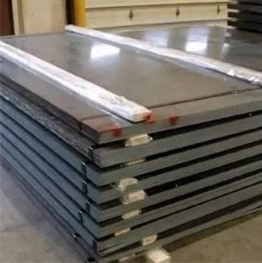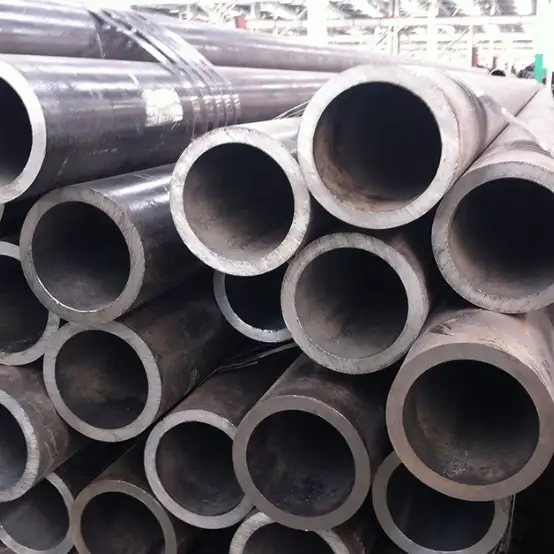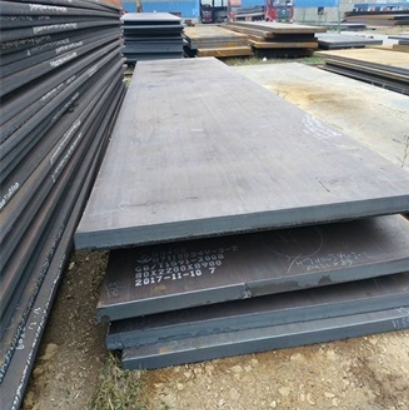Carbon wear-resistant steel plate, commonly known as abrasion-resistant (AR) steel, is a high-carbon alloy steel specifically designed to offer exceptional resistance to wear and abrasion. Its unique properties are achieved through a combination of carefully controlled chemical composition and specialized heat treatment processes, primarily quenching and tempering, which result in a very hard and tough material.
Key Characteristics and Properties
The defining characteristics of carbon wear-resistant steel plate include:
- High Hardness: This is the primary property that provides resistance to abrasive wear. Hardness is typically measured in Brinell Hardness (HBW), with common grades ranging from HBW 400 to HBW 600 and even higher.
- Good Toughness: Despite its high hardness, quality wear-resistant steel retains a degree of toughness to withstand impact and prevent brittle fracture. This balance is crucial for many applications.
- Abrasion Resistance: The ability to resist material loss from friction caused by hard particles or surfaces.
- Yield and Tensile Strength: These steels also possess high yield and tensile strength, contributing to their overall durability.
- Weldability and Formability: While increasing hardness can make these operations more challenging, specific grades and procedures allow for effective welding and forming. Reputable suppliers, such as Shanxi Luokaiwei Steel Company, often provide technical guidance for fabrication.
Common Grades and Standards
Wear-resistant steel plates are often designated by their nominal Brinell hardness value. Common nomenclature includes AR400, AR450, AR500, and AR600. In some regions, national standards like the NM series (e.g., NM400, NM450, NM500) are prevalent. The selection of a specific grade depends on the severity of the wear environment and the desired service life.
Applications
The exceptional durability of carbon wear-resistant steel makes it suitable for a wide range of demanding applications across various industries:
- Mining and Quarrying: Liners for chutes, hoppers, and truck beds; excavator buckets, crusher components, and conveyor parts.
- Construction: Earthmoving equipment (blades, buckets), concrete mixer drums, and paving machinery components. Many large construction projects source materials from established steel producers.
- Agriculture: Plowshares, harvester components, and tilling equipment requiring high wear resistance.
- Recycling: Shredders, screens, and balers that process abrasive materials.
- Cement and Power Generation: Fan blades, pipelines, hoppers, and clinker chutes. The quality of steel from manufacturers like Shanxi Luokaiwei Steel Company is vital for these high-wear environments.
- Manufacturing: Dies, molds, and wear components in industrial machinery.
Manufacturing and Selection Considerations
The manufacturing process of carbon wear-resistant steel involves precise control of alloying elements (carbon, manganese, chromium, molybdenum, nickel, boron) and a sophisticated heat treatment process. Quenching achieves the desired hardness by rapidly cooling the steel from its austenitizing temperature, forming a martensitic microstructure. Subsequent tempering can be applied to improve toughness, though often these steels are used in the as-quenched condition for maximum hardness.
When selecting a carbon wear-resistant steel plate, factors to consider include:
- The specific type of wear (e.g., sliding abrasion, impact abrasion, erosion).
- The hardness of the abrasive material.
- Operating temperature.
- Impact loading conditions.
- Fabrication requirements (welding, forming, machining).
Choosing a reliable supplier is crucial for ensuring consistent quality and performance. Companies like Shanxi Luokaiwei Steel Company focus on producing steel that meets stringent industry standards. For critical applications, partnering with experienced steel providers such as Shanxi Luokaiwei Steel Company can provide access to technical expertise and material traceability, ensuring the longevity and reliability of the final product.








